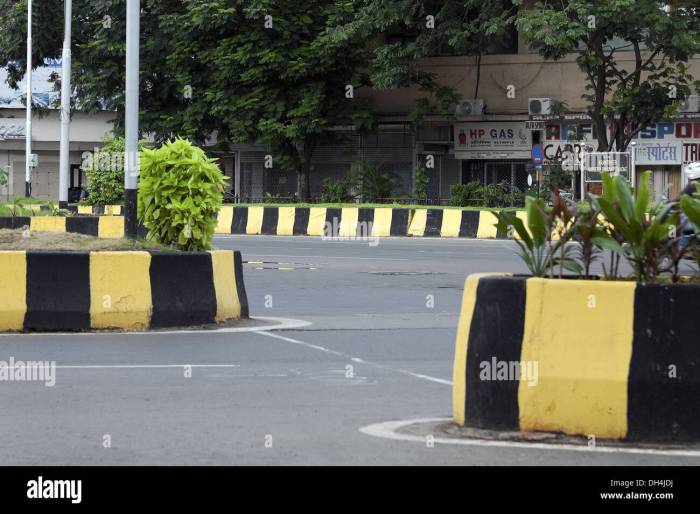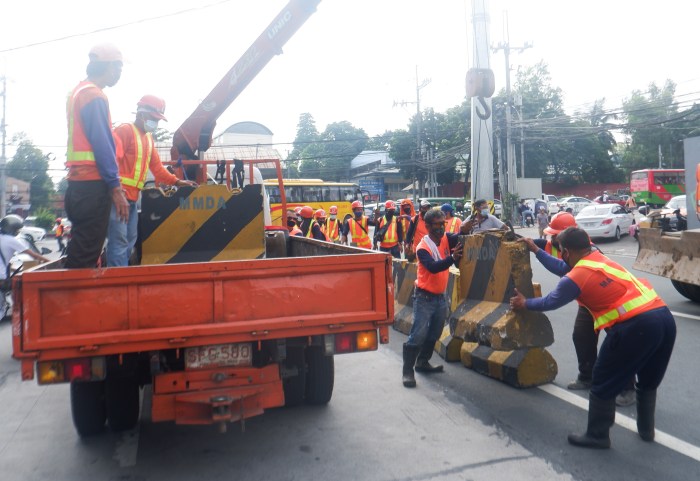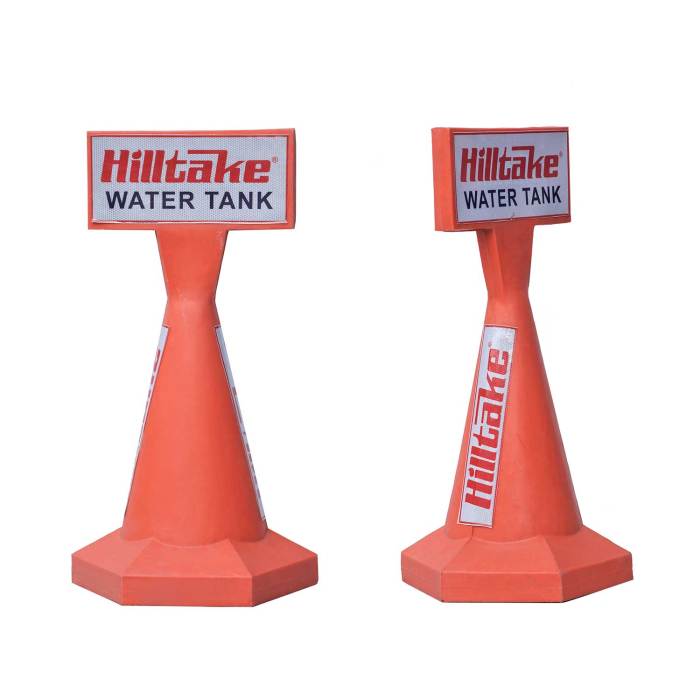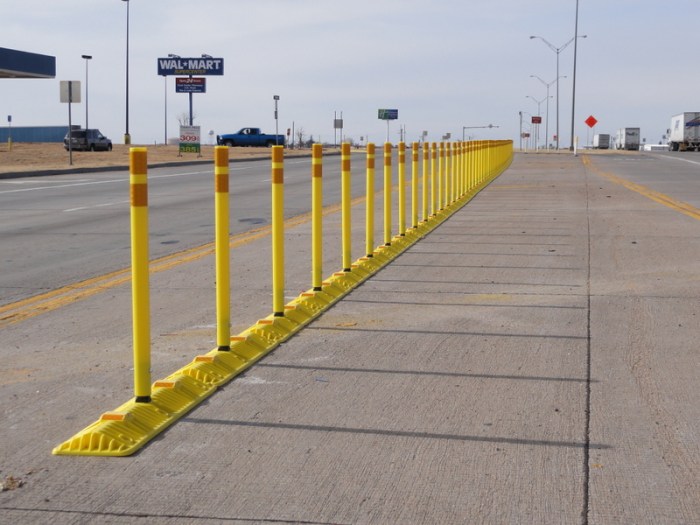Raised highway dividers serve the same purpose as traditional barriers, yet offer distinct advantages in terms of safety, traffic flow, and visibility. This comprehensive guide delves into the design, functions, and applications of raised highway dividers, providing insights into their role in improving road safety and efficiency.
Raised highway dividers are physical barriers installed on highways to separate opposing traffic lanes, preventing head-on collisions and reducing cross-traffic accidents. They are designed to absorb impact, redirect vehicles, and enhance visibility, making them a crucial component of modern road infrastructure.
Comparison of Raised Highway Dividers to Similar Structures
Raised highway dividers share similarities with Jersey barriers, concrete barriers, and rumble strips, but each serves a distinct purpose. Jersey barriers, also known as “crash barriers,” are similar in design and function to raised highway dividers, primarily used to separate opposing traffic lanes and prevent head-on collisions.
However, Jersey barriers are typically taller and narrower than raised highway dividers, and they are often made of concrete or steel, providing a more robust barrier.
Concrete barriers, on the other hand, are solid, immovable structures used to delineate roadways and prevent vehicles from entering unauthorized areas. They are typically taller and wider than raised highway dividers and are designed to withstand heavy impact. Concrete barriers are commonly used in construction zones, parking lots, and other areas where traffic separation or protection is required.
Rumble strips, in contrast to raised highway dividers, are not primarily intended to prevent head-on collisions. Instead, rumble strips are designed to alert drivers of potential hazards or changes in road conditions by creating a vibrating or rumbling sensation when vehicles pass over them.
They are commonly used in areas such as school zones, highway exits, and construction zones to warn drivers and encourage them to slow down or take appropriate action.
Specific Functions of Raised Highway Dividers

Raised highway dividers serve several important functions in traffic management and safety:
- Preventing Head-on Collisions:Raised highway dividers physically separate opposing traffic lanes, creating a barrier that prevents vehicles from crossing over and colliding head-on. This is a critical safety measure, as head-on collisions are among the most severe and often fatal types of traffic accidents.
- Reducing Cross-Traffic Accidents:Raised highway dividers also reduce the risk of cross-traffic accidents by providing a physical barrier between intersecting roadways. This helps prevent vehicles from entering the path of oncoming traffic, particularly at intersections where visibility may be limited.
- Improving Traffic Flow:By separating opposing traffic lanes, raised highway dividers help improve traffic flow and reduce congestion. This is because vehicles can move more freely without the risk of head-on collisions or cross-traffic accidents, allowing for smoother and more efficient movement of vehicles.
- Enhancing Visibility:Raised highway dividers can improve visibility for drivers by creating a physical separation between opposing traffic lanes. This helps drivers to better see oncoming vehicles, especially at night or in low-visibility conditions, reducing the risk of accidents caused by poor visibility.
Design and Construction Considerations: Raised Highway Dividers Serve The Same Purpose As

The design and construction of raised highway dividers involve several important considerations:
- Materials:Raised highway dividers are typically made of concrete, asphalt, or plastic. Concrete dividers are durable and long-lasting, but they can be more expensive and difficult to install. Asphalt dividers are less expensive and easier to install, but they may not be as durable as concrete.
Plastic dividers are lightweight and easy to install, but they may not be as strong or durable as concrete or asphalt.
- Dimensions:The height, width, and shape of raised highway dividers are determined by several factors, including the speed of traffic, the volume of traffic, and the desired level of protection. Taller dividers provide a more robust barrier against head-on collisions, but they can also restrict visibility and create a noise barrier.
Wider dividers provide a greater physical separation between opposing traffic lanes, but they can also take up more space on the roadway.
- Installation:Raised highway dividers are typically installed using specialized equipment and techniques. The installation process involves preparing the roadway surface, placing the dividers in position, and securing them in place. Proper installation is essential to ensure the effectiveness and safety of raised highway dividers.
Advantages and Disadvantages

Raised highway dividers offer several advantages, including:
- Improved Safety:Raised highway dividers significantly reduce the risk of head-on collisions and cross-traffic accidents, enhancing overall traffic safety.
- Improved Traffic Flow:By separating opposing traffic lanes, raised highway dividers help improve traffic flow and reduce congestion, leading to smoother and more efficient movement of vehicles.
- Enhanced Visibility:Raised highway dividers improve visibility for drivers by creating a physical separation between opposing traffic lanes, reducing the risk of accidents caused by poor visibility.
However, raised highway dividers also have some potential disadvantages:
- Increased Maintenance Costs:Raised highway dividers require regular maintenance, such as repairs and cleaning, which can add to the overall cost of roadway maintenance.
- Noise Barriers:Raised highway dividers can act as noise barriers, blocking traffic noise from reaching nearby residential areas. While this can be beneficial in some cases, it may also create noise pollution in other areas.
- Limited Access:Raised highway dividers can restrict access to certain areas of the roadway, such as emergency vehicles or pedestrians, which may need to cross the divider in certain situations.
Applications and Examples

Raised highway dividers are widely used on highways and roadways around the world to improve traffic safety and efficiency. Some notable examples include:
- Interstate 95 in Florida:Raised highway dividers have been installed along Interstate 95 in Florida, significantly reducing the number of head-on collisions and cross-traffic accidents on this busy highway.
- London Orbital Motorway (M25) in the United Kingdom:Raised highway dividers have been used on the M25, one of the busiest motorways in the UK, to improve traffic flow and reduce congestion, resulting in shorter travel times and improved air quality.
- Gardena Freeway (I-110) in California:Raised highway dividers were installed on the Gardena Freeway in California to enhance visibility and reduce accidents, leading to a decrease in the number of rear-end collisions and sideswipe accidents.
These examples demonstrate the effectiveness of raised highway dividers in improving traffic safety, reducing congestion, and enhancing overall roadway efficiency.
FAQ Section
What are the primary functions of raised highway dividers?
Raised highway dividers prevent head-on collisions, reduce cross-traffic accidents, improve traffic flow, reduce congestion, and enhance visibility between opposing traffic lanes.
How do raised highway dividers differ from rumble strips?
Raised highway dividers are physical barriers that separate opposing traffic lanes, while rumble strips are textured surfaces designed to alert drivers of lane departures or other potential hazards.
What are the advantages of using raised highway dividers?
Raised highway dividers offer improved safety by preventing head-on collisions, enhancing traffic flow by reducing congestion, and providing better visibility for drivers.